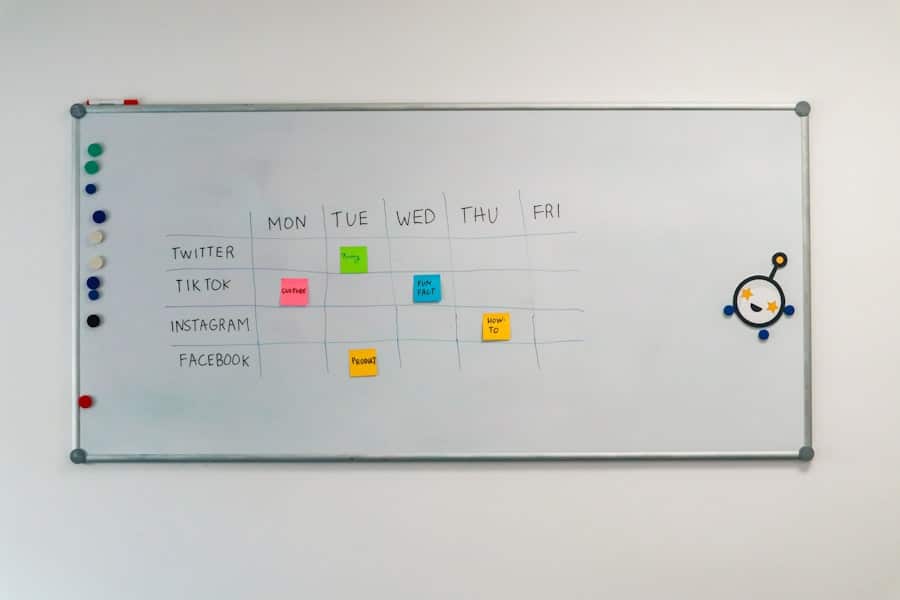In recent years, the educational landscape has undergone a significant transformation, largely driven by advancements in technology. Among these innovations, virtual whiteboard environments have emerged as a pivotal tool for educators and students alike. These digital platforms allow for real-time collaboration, enabling users to brainstorm, share ideas, and visualize concepts in a dynamic and interactive manner.
The rise of virtual whiteboards can be attributed to the increasing demand for remote learning solutions, particularly accelerated by the global pandemic. As schools and universities transitioned to online formats, the need for effective tools that could replicate the collaborative aspects of traditional classrooms became paramount. Virtual whiteboards have evolved from simple digital canvases to sophisticated platforms that integrate various multimedia elements.
Tools like Miro, Jamboard, and Microsoft Whiteboard offer features such as sticky notes, drawing tools, and the ability to embed videos and images. This evolution has made them indispensable in both synchronous and asynchronous learning environments. Educators are now able to create engaging lessons that encourage participation and creativity, breaking down the barriers of physical distance.
The flexibility of these platforms allows for diverse teaching methods, catering to different learning styles and preferences, which is essential in today’s diverse educational settings.
Key Takeaways
- Virtual whiteboard environments are becoming increasingly popular in education due to their ability to facilitate collaborative learning and engagement.
- Collaborative learning in virtual whiteboard environments allows students to work together in real-time, regardless of their physical location, promoting teamwork and communication skills.
- Challenges and limitations of virtual whiteboard environments include technical issues, accessibility concerns, and the need for effective facilitation and moderation.
- Technology plays a crucial role in enhancing collaborative learning by providing tools for real-time interaction, content sharing, and multimedia integration.
- Effective collaboration in virtual whiteboard environments can be achieved through clear communication, defined roles, active participation, and the use of interactive features and tools.
Benefits of Collaborative Learning in Virtual Whiteboard Environments
Collaborative learning is a pedagogical approach that emphasizes group work and peer interaction, fostering a sense of community among students.
One of the primary benefits of collaborative learning in these settings is the enhancement of critical thinking skills.
When students work together to solve problems or create projects, they are exposed to multiple perspectives and ideas. This exchange not only broadens their understanding but also encourages them to articulate their thoughts clearly and defend their viewpoints. Moreover, virtual whiteboards facilitate active participation, which is crucial for effective learning.
In traditional classroom settings, some students may hesitate to speak up due to shyness or fear of judgment. However, the anonymity and flexibility offered by virtual platforms can empower these individuals to contribute more freely. For instance, using features like anonymous polling or chat functions allows quieter students to share their insights without the pressure of speaking in front of peers.
This inclusivity fosters a richer learning environment where all voices are heard, ultimately leading to deeper engagement with the material.
Challenges and Limitations of Virtual Whiteboard Environments

Despite their numerous advantages, virtual whiteboard environments are not without challenges. One significant limitation is the potential for technical difficulties that can disrupt the flow of collaboration. Issues such as poor internet connectivity, software glitches, or compatibility problems can hinder the user experience and lead to frustration among participants.
For instance, if a student is unable to access the whiteboard due to a technical issue, they may miss out on critical discussions or collaborative efforts, which can affect their overall learning experience. Additionally, there is the challenge of ensuring that all participants are equally engaged and contributing to the collaborative process. In a physical classroom, teachers can easily monitor student participation and intervene when necessary.
However, in a virtual setting, it can be more difficult to gauge who is actively involved and who may be disengaged. This lack of oversight can lead to situations where a few students dominate the conversation while others remain passive observers. Educators must be vigilant in creating an inclusive atmosphere where every student feels encouraged to participate actively.
The Role of Technology in Enhancing Collaborative Learning
Technology plays a crucial role in enhancing collaborative learning experiences within virtual whiteboard environments. The integration of various digital tools allows educators to create interactive lessons that cater to diverse learning needs. For example, many virtual whiteboards now support multimedia elements such as videos, images, and hyperlinks, enabling teachers to present information in engaging ways that resonate with students.
This multimedia approach not only captures students’ attention but also aids in the retention of information by appealing to different senses. Furthermore, technology facilitates seamless communication among participants. Features such as chat functions, voice calls, and video conferencing enable real-time discussions that mimic face-to-face interactions.
This immediacy fosters a sense of community and collaboration that is essential for effective learning. Additionally, many platforms offer integration with other educational tools such as Learning Management Systems (LMS), allowing for a more cohesive learning experience. For instance, educators can easily share assignments or resources directly within the virtual whiteboard environment, streamlining the workflow for both teachers and students.
Strategies for Effective Collaboration in Virtual Whiteboard Environments
To maximize the benefits of virtual whiteboard environments, educators must implement effective strategies that promote collaboration among students. One key strategy is establishing clear guidelines and expectations for participation at the outset of any collaborative activity. By outlining roles and responsibilities, educators can ensure that each student understands their contribution to the group effort.
For example, assigning specific tasks such as note-taking or leading discussions can help distribute responsibilities evenly and prevent any one student from dominating the conversation. Another effective strategy is incorporating structured activities that encourage engagement and interaction. Techniques such as think-pair-share or jigsaw activities can be adapted for virtual whiteboards to facilitate meaningful collaboration.
In a think-pair-share activity, students first reflect on a question individually before discussing their thoughts with a partner and then sharing with the larger group. This method not only promotes critical thinking but also allows students to practice articulating their ideas in a supportive environment. By designing activities that require active participation and collaboration, educators can create a more dynamic learning experience that leverages the strengths of virtual whiteboard environments.
The Impact of Virtual Whiteboard Environments on Student Engagement

The impact of virtual whiteboard environments on student engagement cannot be overstated. These platforms provide an interactive space where students can actively participate in their learning process rather than passively consuming information. The visual nature of virtual whiteboards allows for brainstorming sessions where ideas can be mapped out visually, making complex concepts easier to understand.
This visual representation not only aids comprehension but also keeps students engaged as they see their contributions materialize on the screen. Moreover, the gamification elements often integrated into virtual whiteboard tools can further enhance student engagement. Features such as quizzes, polls, and interactive games encourage friendly competition among peers while reinforcing learning objectives.
This immediate feedback loop keeps students invested in the learning process as they see their input valued and acknowledged in real-time.
Future Trends and Innovations in Collaborative Learning
As technology continues to evolve, so too will the landscape of collaborative learning within virtual whiteboard environments. One emerging trend is the integration of artificial intelligence (AI) into these platforms. AI-driven tools can analyze student interactions and provide personalized feedback or suggestions based on individual performance patterns.
For example, an AI system could identify students who may be struggling with specific concepts and recommend targeted resources or activities to help them improve. Another promising innovation is the incorporation of augmented reality (AR) and virtual reality (VR) into collaborative learning experiences. These technologies have the potential to create immersive environments where students can interact with 3D models or simulations directly within the virtual whiteboard space.
Imagine a biology class where students can explore the human body in 3D while collaborating on a project about anatomy—this level of engagement could revolutionize how subjects are taught and understood.
Best Practices for Implementing Virtual Whiteboard Environments in Education
To successfully implement virtual whiteboard environments in educational settings, educators should adhere to several best practices that promote effective use and maximize student engagement. First and foremost, training is essential; both teachers and students should receive adequate instruction on how to navigate the platform’s features effectively. Familiarity with tools such as drawing functions, text boxes, and multimedia integration will empower users to utilize the environment fully.
Additionally, it is crucial to foster a culture of collaboration from the beginning. Educators should encourage students to share ideas openly and respect differing viewpoints while providing constructive feedback on each other’s contributions. Establishing norms around communication—such as using respectful language and actively listening—can create a positive atmosphere conducive to collaboration.
Finally, regular reflection on collaborative activities can help educators assess what works well and what needs improvement. Gathering feedback from students about their experiences with virtual whiteboards can provide valuable insights into how these tools impact their learning journey. By continuously refining their approach based on student input and technological advancements, educators can ensure that virtual whiteboard environments remain effective tools for fostering collaboration and enhancing educational outcomes.
If you are interested in exploring the latest technology trends, you may want to check out The iPhone 14 Pro: Experience the Power of Pro. This article discusses the features and capabilities of the newest iPhone model, highlighting how it can enhance your digital experience. Additionally, if you are curious about wearable technology, you may enjoy reading Which Smartwatches Allow You to View Pictures on Them?. This article delves into the functionality of smartwatches and how they can be used to view and interact with images. Lastly, if you are looking for ways to improve customer interactions, you might find SmartSender: Your Chatbot Platform for Seamless Customer Interactions to be a valuable resource. This article explores the benefits of using chatbots to streamline communication with customers and enhance overall satisfaction.
FAQs
What is collaborative learning in virtual whiteboard environments?
Collaborative learning in virtual whiteboard environments refers to the process of multiple users working together in real-time on a digital whiteboard to share ideas, solve problems, and create content.
What are the benefits of collaborative learning in virtual whiteboard environments?
Some benefits of collaborative learning in virtual whiteboard environments include increased engagement, improved communication and teamwork, enhanced creativity, and the ability to work together regardless of physical location.
What are some popular virtual whiteboard platforms for collaborative learning?
Popular virtual whiteboard platforms for collaborative learning include Miro, Microsoft Whiteboard, Google Jamboard, and Ziteboard. These platforms offer various features such as real-time collaboration, drawing tools, and integration with other productivity tools.
How does collaborative learning in virtual whiteboard environments impact education and business?
Collaborative learning in virtual whiteboard environments can enhance education by promoting active learning, critical thinking, and problem-solving skills. In a business context, it can facilitate remote teamwork, brainstorming, and project planning.
What are some challenges of collaborative learning in virtual whiteboard environments?
Challenges of collaborative learning in virtual whiteboard environments may include technical issues, learning curve for new users, and potential for distractions or lack of focus in a virtual setting. Additionally, ensuring equal participation and contribution from all users can be a challenge.

